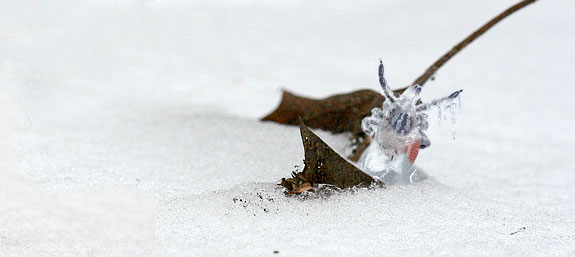
According to Terminex, the answer to that question is, No. Ticks survive the winter in a variety of ways, but do not go away just because it is cold. Depending on the species – and stage in their life cycle – ticks survive the winter months by going dormant or latching onto a host. Ticks hide in the leaf litter present in the wooded or brushy areas they tend to populate. When snow falls, it only serves to insulate the dormant ticks, which are protected by the layer of debris. Or, in the case of soft-shell ticks, they survive by staying underground in burrows or dens.A protein that protects ticks from freezing temperatures also prevents frostbite when introduced in mice, a Yale-led study has found. The research is the first to demonstrate the protein’s ability to boost frostbite resistance in an adult mammal.
The answer to “Are ticks OUT in the winter?” is, It depends. Some types of ticks can be active if the temperature is above 45 degrees Fahrenheit and the ground is not wet or icy. The American dog tick and lone star tick are not typically active during the fall and winter months. Blacklegged ticks, which carry Lyme disease, remain active as long as the temperature is above freezing. The adults look for food right around the first frost. Additionally, the winter tick, which hatches in late summer as temperatures begin to decrease, is active during cooler months. This tick is typically found on moose, and sometimes deer, in the Northeastern part of the country. These ticks are different from other species, because they will spend their entire lives on one host. Winter tick eggs hatch on the ground in August and September. Larvae seek out a host between September and November. Those that find a host will overwinter on it, holding onto its hair when they are not feeding. Those that cannot find a host will likely die. Females will remain on a host until the end of winter or start of spring. Then they drop into the leaf litter, where they will lay up to 3,000 eggs before dying.
So, “How do the ticks survive in the cold? ANTIFREEZE!
According to research from Yale University, several animal species, such as ticks and fish, have anti-freeze proteins that protect them from cold conditions. However, warm-blooded mammals do not have such proteins in their genomes and can suffer severe cold injuries such as frostbite. “We wanted to ask if you put antifreeze in mammals, can you protect them from a cold injury,” said Dr. Erol Fikrig, principal investigator, professor of medicine at Yale School of Medicine, and an investigator for the Howard Hughes Medical Institute.
In the study, Yale investigators and their co-authors at Gulhane Military Medical Academy and Old Dominion University introduced an antifreeze protein derived from the black-legged tick into mice cells as well as in whole live mice. They first tested frostbite resistance of skin samples from mice that were treated with the antifreeze protein and from control mice. The skin samples were stored at 4 degrees Celsius for four days. At the end of four days, the skin cells from the treated mice fared better and even increased in number compared to the control samples.
The researchers also compared the effect of the antifreeze protein on whole mice tails. After seven days of cold exposure, 60% of the treated mice showed no visible sign of frostbite compared to only 11% of control mice. The tails of treated mice also showed fewer signs of inflammation consistent with frostbite damage than control mice.
The authors noted that the antifreeze protein prevents cold damage by limiting the growth of ice crystals that would otherwise cause tissue damage. “This study shows that if you put an antifreeze protein into warm-blooded animals, it does elicit antifreeze activity and it can protect the animal from frostbite,” Fikrig explained.
The research was published Feb. 25 in the journal PLOS ONE.
